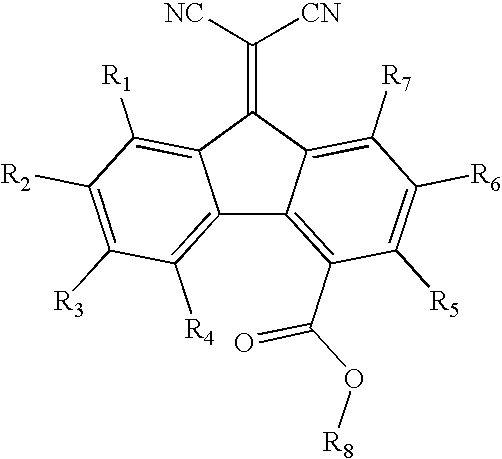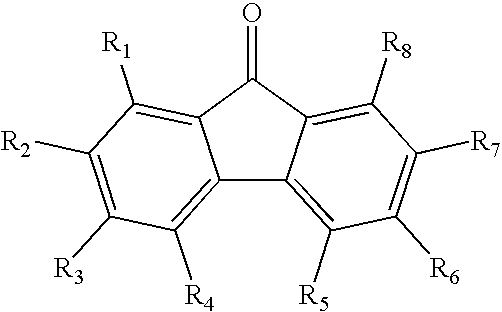Imaging members
a technology of imaging members and members, applied in the field of imaging members, can solve the problems of thin charge transport layer, outermost layer, and inability to achieve the effect of reducing the thickness of the charge transport layer
- Summary
- Abstract
- Description
- Claims
- Application Information
AI Technical Summary
Benefits of technology
Problems solved by technology
Method used
Image
Examples
example 1
A pigment dispersion was prepared by roll milling 2.6 grams of first pigment, Type V hydroxygallium phthalocyanine pigment particles and 2.6 grams of, poly(4,4'-diphenyl-1,1'-cyclohexane carbonate-400 binder, available from Mitsubishi Gas Chemical Co., Inc. binder in 34.8 grams of tetrahydrofuran with four hundred grams of three millimeter diameter steel balls for from about 24 to about 72 hours.
Separately, 9.94 grams of poly(4,4'-diphenyl-1,1'-cyclohexane carbonate) was added together with 6.48 grams of N,N'-diphenyl-N,N'-bis(methylphenyl)-1,1-biphenyl-4,4'-diamine, 4.32 of N,N'bis(1,2-dimethylpropyl)-1,4,5,8-naphthalenetetracarboxylic diimide, 40.94 grams of terahydrofuran and 11.68 grams monochlorobenzene. This mixture was rolled in a glass bottle until the solids were dissolved, then 6.65 grams of the above pigment dispersion was added to form a dispersion containing Type V hydroxygallium phthalocyanine, poly(4,4'-diphenyl-1,1'-cyclohexane carbonate), N,N'-diphenyl-N,N'-bis(meth...
PUM
 Login to View More
Login to View More Abstract
Description
Claims
Application Information
 Login to View More
Login to View More - R&D
- Intellectual Property
- Life Sciences
- Materials
- Tech Scout
- Unparalleled Data Quality
- Higher Quality Content
- 60% Fewer Hallucinations
Browse by: Latest US Patents, China's latest patents, Technical Efficacy Thesaurus, Application Domain, Technology Topic, Popular Technical Reports.
© 2025 PatSnap. All rights reserved.Legal|Privacy policy|Modern Slavery Act Transparency Statement|Sitemap|About US| Contact US: help@patsnap.com



